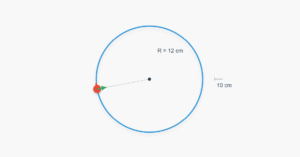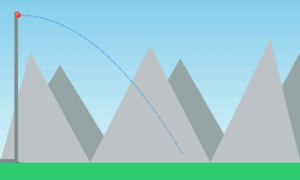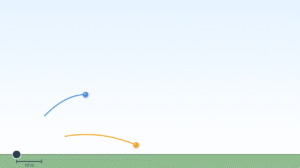Projectile Motion Simulation
Interactive physics simulation demonstrating projectile motion with real-time calculations
Example
Question:
A cricket ball is thrown at a speed of \(28\,\mathrm{m\,s^{-1}}\) in a direction \(30^\circ\) above the horizontal. Calculate
(a) the maximum height,
(b) the time taken by the ball to return to the same level, and
(c) the distance from the thrower to the point where the ball returns to the same level.
Solution:
(a) The maximum height is given by \[ h_m = \frac{(v_0 \sin \theta_0)^2}{2g} = \frac{(28 \sin 30^\circ)^2}{2 \times 9.8} \] \[ = \frac{14 \times 14}{2 \times 9.8} = 10.0\,\mathrm{m} \] (b) The time taken to return to the same level is \[ T_f = \frac{2 v_0 \sin \theta_0}{g} = \frac{2 \times 28 \times \sin 30^\circ}{9.8} = \frac{28}{9.8} = 2.9\,\mathrm{s} \] (c) The distance from the thrower to the point where the ball returns to the same level is \[ R = \frac{v_0^2 \sin 2\theta_0}{g} = \frac{28^2 \times \sin 60^\circ}{9.8} = 69\,\mathrm{m} \]



